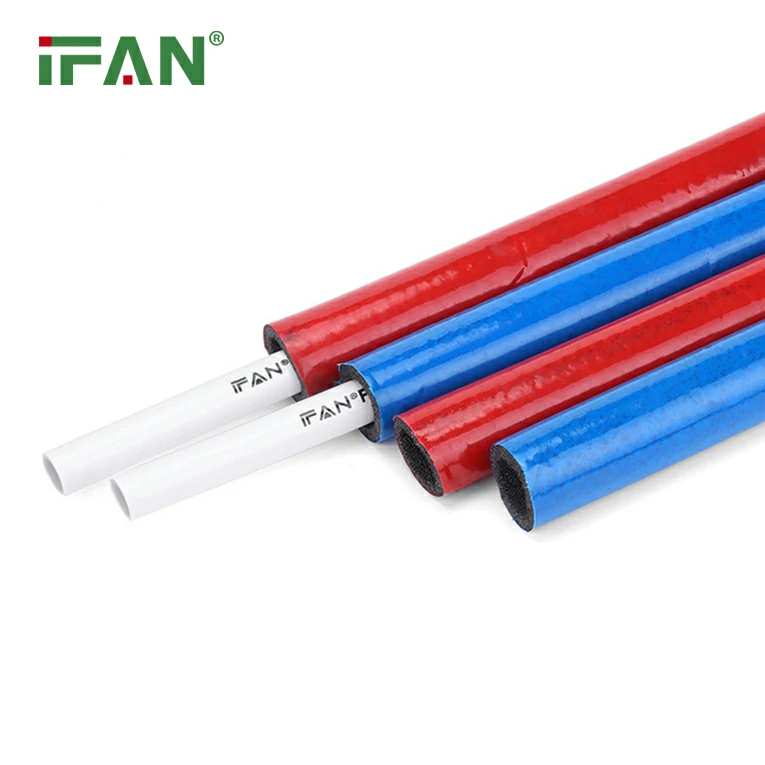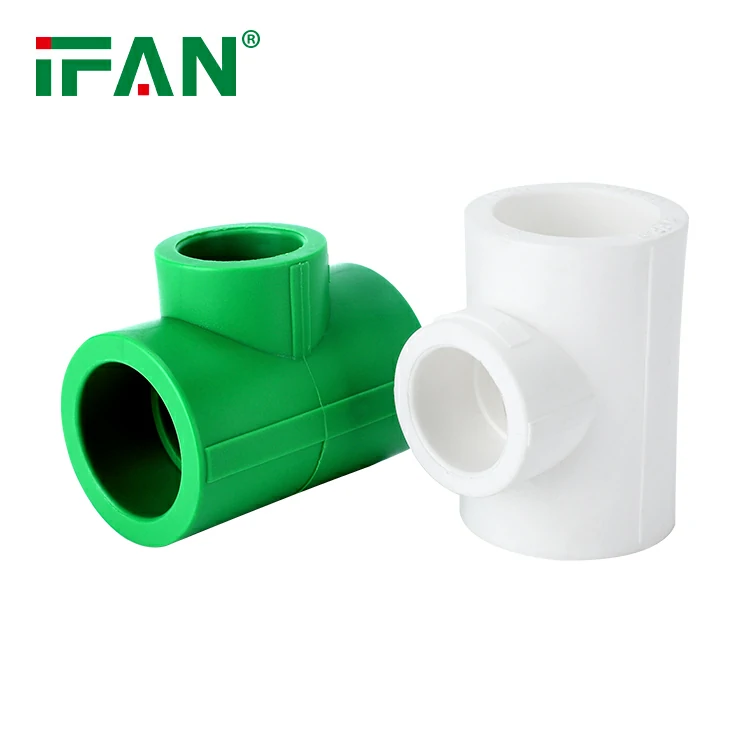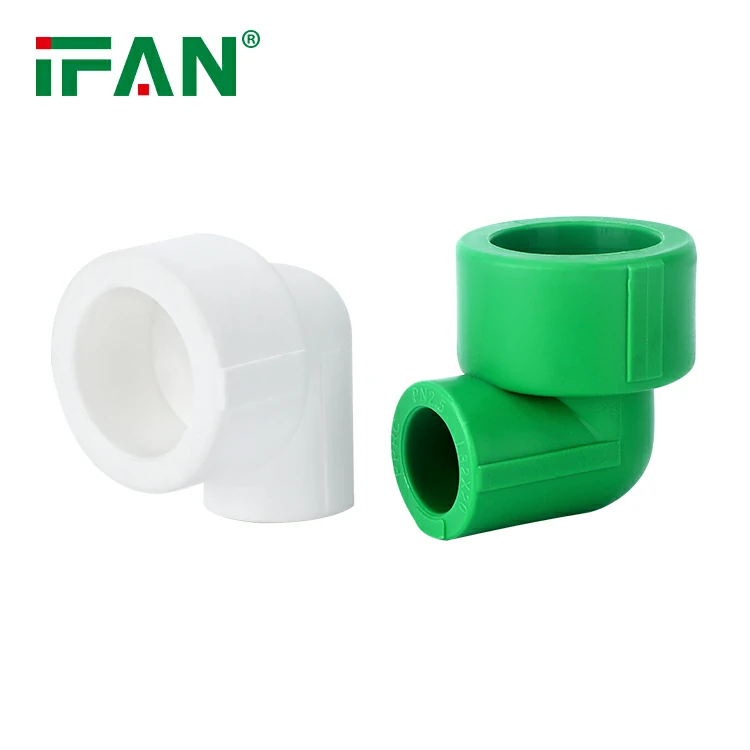PEX (cross-linked polyethylene) pipes have revolutionized plumbing systems across the United States, offering an affordable, durable, and flexible alternative to traditional materials like copper and PVC. In regions with harsh winters, such as Iowa, PEX pipes are particularly popular because they are resistant to corrosion and can expand slightly when frozen, reducing the risk of bursting. However, this doesn’t mean they are immune to freezing and bursting. To ensure that your PEX press fittings and piping systems continue to perform optimally throughout winter, it’s essential to take preventative measures to protect them from the damaging effects of freezing temperatures.
In this article, we’ll explore effective ways to prevent PEX pipes from freezing and bursting in cold climates like Iowa, where sub-zero temperatures and heavy snowfalls are common. We’ll also look into how to maintain PEX press fittings to ensure your plumbing system remains intact even during the harshest winter conditions.

Why Do PEX Pipes Freeze and Burst?
Before diving into prevention methods, it’s essential to understand why PEX pipes can freeze and burst. While PEX pipes have the ability to expand slightly when frozen (unlike rigid pipes), this expansion can only go so far before the pipe is compromised.
When PEX pipes are exposed to freezing temperatures, the water inside the pipe freezes and expands. Although PEX pipes are more flexible than other materials, the pipe can still crack or burst if the water inside expands too much. Additionally, if the PEX press fittings—which are used to connect sections of the pipe—are not secured properly or are exposed to extreme cold, they can become weak and fail under pressure, leading to leaks and burst pipes.
To prevent the catastrophic damage that can result from frozen and burst PEX pipes, proactive steps need to be taken. Here’s how you can safeguard your plumbing system against the extreme cold.
1. Insulate Exposed PEX Pipes
One of the simplest and most effective ways to prevent PEX pipes from freezing is to insulate them. Pipe insulation is available in various forms, including foam, fiberglass, and rubber, and can be easily applied around exposed pipes to maintain a stable temperature.
Why Insulation is Key:
- Insulating your PEX pipes helps to trap heat and prevent the water inside from freezing.
- Insulation is particularly crucial for pipes in unheated areas like basements, attics, crawl spaces, garages, or exterior walls, where temperatures can plummet.
- Even in well-heated spaces, PEX pipes running along exterior walls may be vulnerable to cold, so insulation is important in these areas as well.
You can find pre-slit foam insulation at most hardware stores, which can be easily wrapped around pipes. In colder climates like Iowa, thicker insulation may be necessary to provide adequate protection. Additionally, make sure that the insulation is secure and covers the entire length of the pipe.
2. Maintain a Steady Temperature
In cold weather, maintaining a consistent temperature throughout your home is critical. Sudden drops in temperature can cause PEX pipes to freeze quickly, especially in less insulated areas.
Tips for Maintaining a Steady Temperature:
- Keep your home at a minimum temperature of 55°F (13°C) throughout the day and night during winter. This helps prevent pipes in unheated areas from freezing.
- If you have an unheated garage or attic, consider running a space heater to maintain a minimum temperature in these areas. This will prevent cold air from infiltrating the pipes and freezing them.
- Open cabinet doors under sinks to allow warm air to circulate around the PEX pipes in areas like kitchens and bathrooms.
In Iowa, where temperatures can easily dip below freezing, it’s especially important to maintain heat in all areas of the house, especially during extended cold spells. Don’t wait for the temperature to drop before taking action; instead, plan ahead during the fall months to ensure that your pipes stay warm throughout the winter.
3. Allow Faucets to Drip
Allowing your faucets to drip slightly during periods of extreme cold can help prevent the pipes from freezing. When water moves through the pipes, even slowly, it’s less likely to freeze than when water sits still. A small, constant stream of water ensures that the pressure inside the PEX pipes doesn’t build up to the point where it could cause freezing and expansion.
How to Implement This Method:
- Let a faucet on an exterior wall drip overnight when freezing temperatures are expected.
- Ensure that both hot and cold taps are left open to allow water to flow.
- You don’t need a full stream of water; just a small drip will suffice.
Although this method may result in a slight increase in your water bill, it’s a small price to pay compared to the cost of repairing burst PEX pipes and damaged property from a plumbing disaster.
4. Seal Gaps and Cracks
Cold air can seep in through cracks and gaps around windows, doors, and walls, making your PEX pipes more vulnerable to freezing. Sealing these gaps is a crucial step in preventing the freezing of your plumbing system.
How to Seal Gaps:
- Use weather stripping or caulk to seal any gaps around windows and doors, especially those near plumbing pipes.
- Check areas where pipes exit the home, such as through exterior walls, and use foam or caulk to seal these spaces. Even small gaps can lead to cold air exposure and increase the likelihood of freezing.
- For pipes in unheated spaces, consider adding foam board insulation around the walls and ceilings to further reduce the risk of cold drafts.
Sealing gaps and cracks helps to maintain the overall temperature of the home, which is essential for preventing freezing pipes, and it can also help you reduce heating costs during the winter months.
5. Use Heating Cables for High-Risk Areas
In areas where the risk of freezing is particularly high, such as crawl spaces or exterior walls, consider installing heating cables designed to prevent pipes from freezing. These cables are wrapped around the pipes and provide direct heat when temperatures drop too low, helping to maintain an optimal temperature for the water inside the pipes.
Benefits of Heating Cables:
- Heating cables are specifically designed for pipe protection and are easy to install on both PEX pipes and other materials.
- They are typically controlled by a thermostat that activates the heat when temperatures drop below a certain threshold.
- Heating cables are particularly useful in areas where pipes are exposed to the cold for long periods.
Make sure to follow the manufacturer’s instructions when installing heating cables to ensure they are used safely and effectively.
6. Consider a Freeze-Proof System
For those living in particularly cold areas of Iowa, it may be worth considering a freeze-proof plumbing system. Some companies offer innovative systems that incorporate built-in temperature regulation and moisture detection to prevent pipes from freezing in the first place. These systems can be particularly beneficial in homes with plumbing running through unheated or poorly insulated spaces.
While these systems can be more expensive than traditional plumbing, they offer peace of mind and a long-term solution for preventing frozen PEX pipes.
7. Regularly Inspect PEX Pipes and Press Fittings
Finally, it’s essential to regularly inspect your PEX pipes and PEX press fittings for signs of wear and tear. Even small leaks or cracks in PEX press fittings can increase the likelihood of water escaping and freezing, leading to damage. Periodically checking your plumbing for issues can help you catch potential problems before they escalate.
What to Look For:
- Check for visible cracks, bulges, or any signs of damage on exposed PEX pipes.
- Inspect PEX press fittings for tightness and ensure they are properly secured to prevent leaks.
- Test the water pressure in your system. Low pressure could indicate a hidden leak.
Taking the time to inspect your system can help you catch small issues before they become major problems during the winter.
Conclusion
Preventing burst and frozen PEX pipes in Iowa requires a combination of preparation, insulation, and vigilance. While PEX pipes are generally more flexible and resistant to freezing than other materials, they are still vulnerable to the harsh winter conditions that many homes in Iowa face. By insulating exposed pipes, maintaining consistent temperatures, sealing cracks, and using tools like heating cables, you can significantly reduce the risk of frozen pipes. Regular inspections and early detection can also help prevent costly repairs and water damage.
With these proactive steps, you can ensure that your PEX press fittings and plumbing system remain intact, even in the coldest months of the year.
FAQs About Preventing Frozen PEX Pipes
1. How do I know if my PEX pipes are at risk of freezing?
PEX pipes in unheated areas such as basements, attics, or crawl spaces are at the highest risk. If your home is prone to temperature drops below freezing, you should consider taking preventive measures like insulation or heating cables.
2. Can PEX pipes really burst if they freeze?
While PEX pipes are more flexible than other materials, they can still burst if the water inside them freezes and expands beyond the pipe’s ability to stretch. Proper insulation and temperature regulation can help prevent this.
3. Do I need to leave my faucets running all winter to prevent freezing?
Leaving faucets slightly open during extreme cold can help prevent freezing by allowing water to flow. However, it’s not necessary to run the water constantly—just a drip will suffice.
4. Are PEX pipes more vulnerable to freezing than copper or PVC?
No, PEX pipes are more flexible than copper or PVC, which means they are less likely to burst when frozen. However, they are still at risk, especially in very cold temperatures or poorly insulated areas.
5. Can I install heating cables on PEX pipes myself?
Yes, heating cables can be installed on PEX pipes, and many are DIY-friendly. Just ensure that you follow the manufacturer’s instructions to ensure safe and effective operation.





